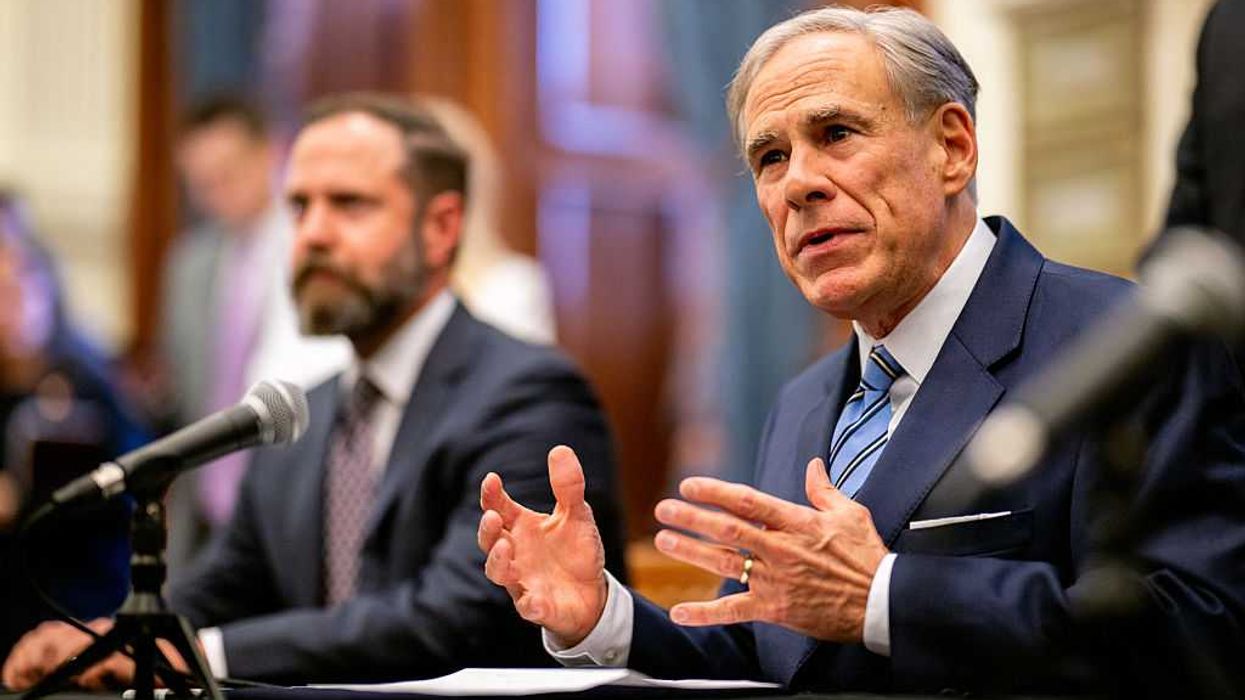This marks our our 10th year of doing this. And by “this", we mean using data, logic and reason to support the very basic conclusion that infinite growth on a finite planet is impossible.
Surprisingly, this simple, rational idea -- despite its huge and fast-growing pile of corroborating evidence -- still encounters tremendous pushback from society. Why? Because it runs afoul of most people's deep-seated belief systems.
Our decade of experience delivering this message has hammered home what behavioral scientists have been telling us for years -- that, with rare exceptions, we humans are not rational. We're rationalizers. We try to force our perception of reality to fit our beliefs; rather than the other way around.
Which is why the vast amount of grief, angst and encroaching dread that most people feel in western cultures today is likely due to the fact that, deep down, whether we're willing to admit it to ourselves or not, everybody already knows the truth: Our way of life is unsustainable.
In our hearts, we fear that someday, possibly soon, our comfy way of life will be ripped away; like a warm blanket snatched off of our sleeping bodies on a cold night.
The simple reality is that society's hopes for a "modern consumer-class lifestyle for all" are incompatible with the accelerating imbalance between the (still growing) human population and the (increasingly depleting) planet's natural resources. Basic math and physics tell us that the Earth's ecosystems can't handle the load for much longer.
The only remaining question concerns how fast the adjustment happens. Will the future be defined by a "slow burn", one that steadily degrades our living standards over generations? Or will we experience a sudden series of sharp shocks that plunge the world into chaos and conflict?
It's hard to say. As Yogi Berra famously quipped, “It's tough to make predictions, especially about the future." So, it's left to us to remain open-minded and flexible as we draw up our plans for how we'll personally persevere through the coming years of change.
But even while the specifics about the future elude us today, “predicting" the macro trends most likely to influence the coming decades is very doable:
Rising trends:
- Populism in politics
- Federal debt levels
- Geopolitical tensions
- Interest rates
Falling trends:
- Funding levels for pensions
- The numbers of insects world wide
- Confidence in the future among the younger generations
- Wealth and income equality
Trends can be expected to continue until they change. Therefore making "predictions" on trends is like making a "prediction" about which way an already tossed ball will travel. It's not really a prediction at all, but a statement of observed data.
These two lists bring to mind another great Yogi Berra quote:
No, the future certainly isn't what it used to be.
Once it was a place in which you could invest towards your hopes and dreams, confident that conditions would be better for your children than they were for you.
That's no longer the case. The defining trends in play are all working to degrade, rather than enhance, our future prospects.
Which is why it's little surprise that millennials aren't saving for retirement. Here's the dim view many of them hold:
“In general, I regard the future as a multitude of possibilities, but most of them don't look good," Elias Schwartzman, 29, a musician, told me. “When I'm at retirement age, around 2050, I think it's possible we'll have seen a breakdown of modern society." Schwartzman said that he saw the future as encompassing one of two possibilities: an apocalyptic “total breakdown of industrial society," or “capitalism morphing into a complete plutocracy." “I think the argument can be made that we're well on the way to that reality," he added.
Wood, 32, a political consultant, told me via Twitter that she felt similarly. “I don't think the world can sustain capitalism for another decade," she explained. “It's socialism or bust. We will literally start having resource wars that will kill us all if we don't accept that the free market will absolutely destroy us within our lifetime [if] we don't start fighting its hegemony," she added.
(Source – Salon)
As someone who tracks economic, environmental and energy data closely, these views are neither surprising nor really debatable. They are merely trend extrapolations, which are difficult to dismiss.
What the older generations don't yet understand is that the economic and social models that rewarded them so richly are not doing the same for younger folks. In fact, those old models are visibly breaking down. And confidence in them is failing, too.
Younger people are increasingly seeing that the model of extractive, exponential growth (which is often errantly termed “capitalism" when, as practiced, it should be termed “corporate socialism") has no future. And of course, they are right.
But regardless of age, anyone with an open mind should be able to identify that something is wrong with the story of "endless growth". The evidence is pretty much everywhere we look:
(Source)
If we're willing to entertain the possibility that infinite exponential growth is impossible, and we extrapolate from there, what sort of economic trajectory would we expect to see as growth peters out? Exactly the sort we see in the above chart. Lower and slower growth that finally peters out and then slips into reverse for the rest of the story.
Sociologically, we'd expect people to be nervous, anxious, and scared as their dominant cultural narrative is increasingly revealed to be no longer viable. Ask yourself: is the world becoming calmer or more volatile? The rash of mass shootings, anti-establishment election victories, prescription drug epidemics, and returning nuclear war fears make the answer sadly obvious.
Biophysically, we'd expect to see key resources and species populations depleting at alarming rates -- which we are. This is due to diminishing returns: nearly every planetary resource is getting harder and more expensive to obtain. Mars anyone?
In a desperate attempt to mask the costs of of slower and lower growth, the world's central banking cartel has deployed its “one weird trick": lowering interest rates to historic rock-bottom levels. This has allowed for more debt to be crammed into the system for a few more years, to keep the mirage of the party continuing for just a little bit longer.
Because of that hail Mary, we have ended up in this very bizarre situation where our debt has been growing at twice the rate of our income -- which clearly will end up in a solvency crisis:
Perversely, the central banks are doing everything in their power to defend and propagate this unsustainable status quo, even though fourth grade math tells us it will surely end in ruin. How is it possible that this very simple observation eludes so many of those in positions of power? You'd have to be an intellectual yet idiot to hold the view that debts can forever compound at faster rate than income.
Further, we find that when the US government's deficit spending is stripped out from GDP growth, there actually hasn't been any economic growth at all for years:
(Source)
The US has been going deeper and deeper in debt simply to maintain the appearance of "economic growth". This whole illusion is being limped along for just a little while longer.
For what purpose? And why? Both excellent questions without a good answer. You should be asking yourself what "success" looks like here. What's the eng game? More growth? Okay, then what? More growth? Keep going along that line of thinking. Take as much time as you need.
Clearly there's an end to that story somewhere. Growth ceases. Presumably smart people in power get this, too, although they'll never admit it publicly so as not to spook the herd. Looking at the number of very well-connected and wealthy elites busily arranging bolt-hole properties to retreat to 'just in case', they're already well ahead of the general public in preparing for the tribulations to come.
All of which brings us to the very real prospect of war, as that has long been the favored path of politicians seeking to deflect public ire from their own policy failures. I worry that a major military conflict is dangerously close at hand. The ridiculous UK government narrative around the Skripal poisonings (which remains utterly illogical from start to finish) used to seriously degrade relationships between Russia and NATO has all the hallmarks of contrived political operation.
Added to the brewing geopolitical risk is the very likely prospect of the bursting of The Mother Of All Bubbles. When (not if, sadly) that happens, it will be truly catastrophic to every financial market in the world, and especially damaging to the western economies.
So the race is on. Will the bubble burst first? Or can the political class engineer a massive military distraction beforehand?
Regardless of who “wins" that race, you need to be physically, emotionally and financially prepared for these outcomes. PeakProsperity.com's (free) What Should I Do? guide is an essential resource for those not yet fully prepped, as well as is our Self-Assessment.
Yes. Things are that serious.
If you're not yet an enrolled subscriber to PeakProsperity.com, please consider becoming one now. 2018 is looking to be the shoo-in candidate for "The Year Everything Changed". Interest rates are finally rising. Volatility is finally returning to the financial markets. Oil prices are threatening to finally return to the critical $70/bbl range. The populace is finally waking up to the extent of the abuse perpetrated on their safety, personal data, and civil liberties. The crypto bubble has finally burst.
So many long-term trends that have defined the (false) sense of 'prosperity' over the past eight years are ending now. What ensues will be fast-paced disruption.
By enrolling, you'll stay abreast of developments and be able to position yourself (and your wealth) accordingly, benefiting from our daily work to harvest and synthesize all the complex information so you don't have to. You'll support will also help our ongoing efforts to bring Peak Prosperity's alternative message and insights to a greater percentage of the general public, who desperately need this information to counter the "Don't worry, everything is awesome!" narrative prevalent in our captive mass media.
In this vein, in Part 2: Everything Is Suddenly Deteriorating, Fast we analyze the recent whipsaw volatility that has broken out in the financial markets and explain why it, along with other markers we've been watching out for, indicates that the markets are poised to fall dramatically further from here -- whether war breaks out or not.
But even if this is as far as you're going to read, please get your preparations in place and get ready to hold fast. Things are only going to get bumpier from here.
Click here to read Part 2 of this report (free executive summary, enrollment required for full access)





 Harold M. Lambert / Contributor | Getty Images
Harold M. Lambert / Contributor | Getty Images
 Adam Gray / Stringer | Getty Images
Adam Gray / Stringer | Getty Images Anadolu / Contributor | Getty Images
Anadolu / Contributor | Getty Images Brandon Bell / Staff | Getty Images
Brandon Bell / Staff | Getty Images